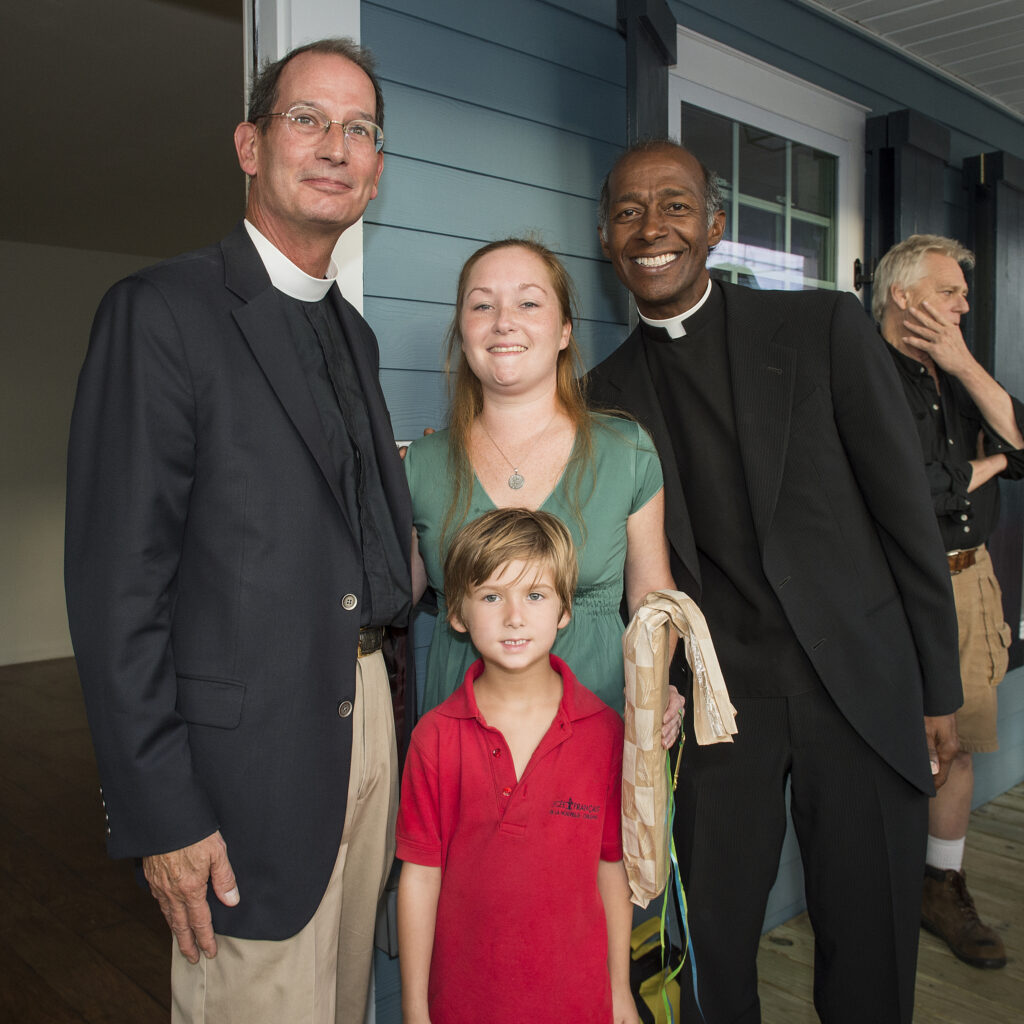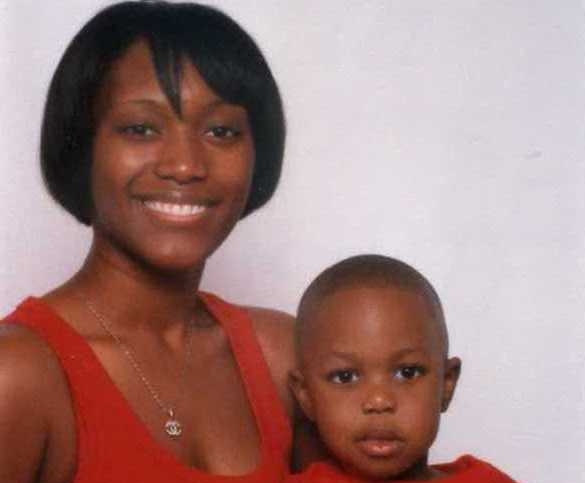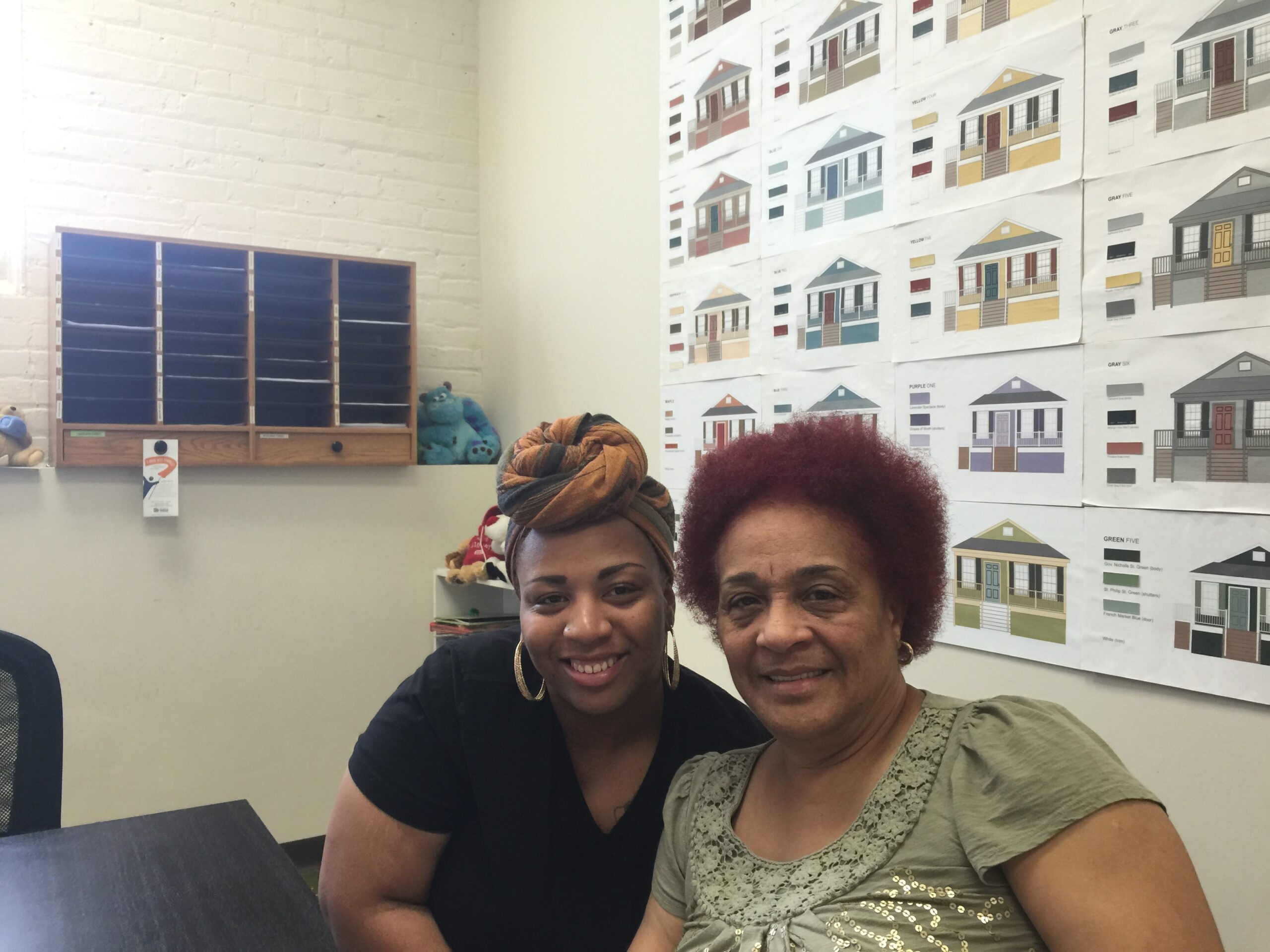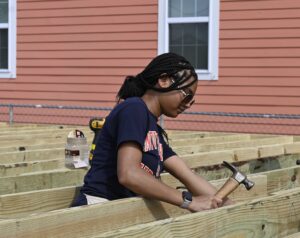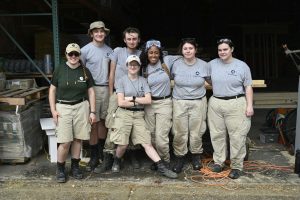It’s a simple idea: we are better working together than alone. This is true for our volunteers, and it’s true for our city. Building a house alone is theoretically possible, but building a house with several hundred people is much easier. Moreover, as the house is built, if some of those hundred people have diverse skill sets—an electrician, a carpenter, and a plumber, for instance—building the house becomes even easier. On a larger scale, when addressing major issues like poverty housing, crime, or blight across the New Orleans area, it’s clear that no single person can solve these problems, and studies suggest that no single demographic can be responsible for solving them either. We must all work together across social, economic, racial, and other lines.
The data on these divides can be discouraging. A snapshot of the socioeconomic situation in New Orleans suggests growing gaps between black and white citizens on many factors, including household income, employment rates, incarceration rates, and more. As The Data Center points out, these demographic lines are invisibly drawn in our community, and they threaten the city’s ability not just to address major issues but to continue the progress made since Hurricane Katrina.
An often overlooked part of NOAHH’s mission is making affordable housing a matter of conscience. This part of the mission is addressed through the sweat equity and volunteering programs. As partner families put in their hours, they form bonds with staff and volunteers, and vice versa. As volunteers from different backgrounds work together, they bridge the gaps between those backgrounds. And as these bonds are formed, they attain a greater understanding of the universal qualities that make us human, and thus, an understanding of the idea that everyone, no matter who they are, deserves a safe, decent place to live. This process, repeated by over 150,000 volunteers with 500 partner families, has a palpable impact on the city of New Orleans.
Below are a selection of stories when NOAHH saw groups unite despite social, economic, racial, or other differences, bonding over commonalities in mission, culture, or simply their experience on the build site:
Student Volunteers
Dennis Kehoe, a former NOAHH board member and current Core Volunteer, is a Classics professor at Tulane University who requires that his students volunteer with NOAHH as part of the Tulane Interdisciplinary Experience Seminars. He recounted an incident when a group of his students were working on a secluded street in a part of town that had not yet recovered significantly from the storm. The students, most of whom came from middle class backgrounds, were nervous about the area, carrying preconceived notions of what it meant for their safety. Instead of being met with violence, however, they were welcomed with a more traditional New Orleans gesture: food. Women from nearby houses brought popsicles, an especially welcome gift in the New Orleans heat. What Kehoe said his students reported of the incident was that it changed their perspective of the neighborhood itself, making them feel welcome and dispelling their assumptions of hostility. The incident was remarkable, but even when the volunteer day is not interrupted by random acts of kindness, his student volunteers typically report leaving with a better understanding of the people they have worked with, especially when they have the chance to work with a partner family.

The Faith Build
Both Household of Faith and Trinity Episcopal Church have worked with NOAHH in the past, separately, and their experiences building homes had already shown them that it was a great environment for building bridges across racial divides. This fall, for the first time in their long histories of community service, the churches worked together to fund and build a home in ten days, and the end result was more than just building a house in ten days. At the home dedication, Trinity Episcopal revealed that their governing body officially challenged Household of Faith to extend the partnership into a covenant partnership, while Household of Faith affirmed that they planned to not only keep working together, but to commit to major projects like the blitz build they had just completed.
“There’s so much challenge I see when it comes to racial reconciliation,” said Reverend Antoine Barriere of Household of Faith. “I found out it’s really not as much a challenge if you just intentionally work together.”
The Faith Build, a one-home blitz in the Hollygrove area, was inspired by the Episcopal Diocese’s Year of Racial Reconciliation, which saw them reaching out to Household of Faith to jointly address a topic of significant concern for both. Inspired by the impact of their hard work, the churches have now forged a lasting partnership.
Rebuilding Hope
Diana Likely volunteered with NOAHH through Rebuilding Hope in New Orleans, a ministry of the St. Charles Avenue Presbyterian Church, helping to build homes on Ferry Place in the Carrollton area. She worked alongside many partner families as the 14-home project continued over several years, but the first partner she met, Jenika Sly, had the most notable impact:
“She had a beautiful, shy smile, and silently slipped into our group, sat with us and watched the first day we were there.” Likely said, “She looked so young that I never imagined she was a partner… Over the next few days I learned that she was a single mother of a young son, she worked for UPS, and that one of the first two houses under construction on Ferry Place was hers. I felt a special bond with her as we got to know each other, and I looked forward to returning the next year to find her in her completed home.”
Sweat Equity
With many partner families, the story is similar. Working alongside volunteers shows them that someone cares—a sentiment that had profound impact after the storms. Diane Norman’s home suffered severe damage during Hurricane Katrina and the subsequent levee failures, filling with over ten feet of water. Though she and her mother were able to return to her home after two years, major damage remained until this fall, when she signed up for the A Brush With Kindness repair program at NOAHH. For a week, volunteers worked on the exterior of her home, and each day, Diane and her sister cooked them lunch. Sharing a table, Diane and the volunteers quickly formed a bond. By the end of the week, Norman and the volunteers were so close that she was reluctant to let them go.
“Most of them were as old as me,” Norman said, with surprise. “To give so freely, that’s a blessing, to get out here and want to come. They told me ‘we’ve been blessed in life and giving back.’ You’ve got to be able to walk in somebody’s shoes in order to see why they’re out here doing the things they’re doing. That’s a wonderful moment.”
